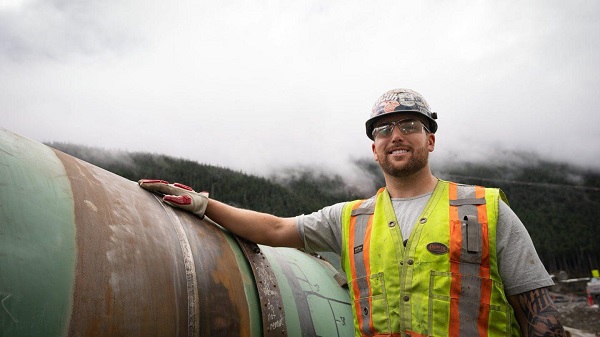Alberta
Back To Work! – Restaurants to open, kids “school” sports, and one on one indoor personal fitness will be allowed beginning February 8

From the Province of Alberta
Alberta is introducing a path forward for easing COVID-19 health restrictions, with clear benchmarks for hospitalizations. This will begin with step 1, with some restrictions easing on February 8
Easing of provincewide health measures will occur in steps based on COVID-19 hospitalization benchmarks.
These steps and benchmarks will provide a transparent approach to easing restrictions for businesses and individuals while protecting the health-care system.
Each step has an associated benchmark of hospitalized COVID-19 patients, including intensive care patients. Changes to restrictions will be considered once a benchmark is reached.
The hospitalization benchmarks are:
- Step 1 – 600 and declining
- Step 2 – 450 and declining
- Step 3 – 300 and declining
- Step 4 – 150 and declining
With hospitalizations dipping below 600, Alberta will move to Step 1 on Feb. 8.
If after three weeks the hospitalization numbers are in the range of the next benchmark, decisions will be considered for moving to Step 2. The same three-week re-evaluation period will be used for all subsequent steps.
“This roadmap sets out a clear path for when and how Albertans will see some easing of heath measures. By outlining the benchmarks we must achieve to see more reopenings, we are offering hope and a path forward. But we have to proceed with caution. This stepped approach will only work if Albertans continue to follow existing health measures and make good choices to keep our numbers trending down. It’s up to each one of us to maintain our vigilance.”
“Throughout the pandemic, we’ve emphasized the importance of maintaining our health-care capacity. These hospitalization benchmarks will help us chart a path forward to carefully restart businesses and activities that people depend on. We’re laying out a series of steps to ease selected measures starting with those that have the lowest risk, all subject to the need to protect our health system.”
“By outlining a roadmap with clear targets, we want Albertans to see themselves as part of the solution. We must all continue to follow public health measures and reduce the spread of COVID-19 to see our downward trend continue. Only as we see hospitalizations fall low enough can we consider additional easing of restrictions.”
Indoor masking and distancing requirements will remain in place throughout the entire stepped approach, and some degree of restrictions will still apply to all activities within each step.
The grouping and sequencing of steps is based on relative risk for COVID-19 transmission. Actions with the lowest relative risk will be those first considered for easing.
Early steps: In effect Jan. 18
- Outdoor social gatherings allowed up to 10 people.
- Personal and wellness services opened for appointments only.
- Funeral service attendance was raised to 20 people.
- In-person classes resumed for K-12 students (Jan. 11).
Step 1: Hospitalization benchmark – 600
- Potential easing of some restrictions related to:
- Indoor and outdoor children’s sport and performance (school-related only)
- Indoor personal fitness, one-on-one and by appointment only
- Restaurants, cafes, and pubs
Step 2: Hospitalization benchmark – 450
- Potential easing of some restrictions related to:
- Retail
- Community halls, hotels, banquet halls and conference centres
- Further easing of some restrictions eased in Step 1
Step 3: Hospitalization benchmark – 300
- Potential easing of some restrictions related to:
- Places of worship
- Adult team sports
- Museums, art galleries, zoos and interpretive centres
- Indoor seated events, including movie theatres and auditoriums
- Casinos, racing centres and bingo halls
- Libraries
- Further easing of some restrictions eased in Steps 1 and 2
Step 4: Hospitalization benchmark – 150
- Potential easing of some restrictions related to:
- Indoor entertainment centres and play centres
- Tradeshows, conferences and exhibiting events
- Performance activities (e.g., singing, dancing, wind instruments)
- Outdoor sporting events (e.g., rodeo)
- Wedding ceremonies and receptions
- Funeral receptions
- Workplaces – lifting work-from-home measures
- Amusement parks
- Indoor concerts and sporting events
- Festivals, including arts and cultural festivals (indoor and outdoor)
- Day camps and overnight camps
- Further easing of some restrictions eased in Steps 1-3
Alberta’s government is responding to the COVID-19 pandemic by protecting lives and livelihoods with precise measures to bend the curve, sustain small businesses and protect Alberta’s health-care system.
Alberta
CPP another example of Albertans’ outsized contribution to Canada

From the Fraser Institute
By Tegan Hill
Amid the economic uncertainty fuelled by Trump’s trade war, its perhaps more important than ever to understand Alberta’s crucial role in the federation and its outsized contribution to programs such as the Canada Pension Plan (CPP).
From 1981 to 2022, Albertan’s net contribution to the CPP—meaning the amount Albertans paid into the program over and above what retirees in Alberta received in CPP payments—was $53.6 billion. In 2022 (the latest year of available data), Albertans’ net contribution to the CPP was $3.0 billion.
During that same period (1981 to 2022), British Columbia was the only other province where residents paid more into the CPP than retirees received in benefits—and Alberta’s contribution was six times greater than B.C.’s contribution. Put differently, residents in seven out of the nine provinces that participate in the CPP (Quebec has its own plan) receive more back in benefits than they contribute to the program.
Albertans pay an outsized contribution to federal and national programs, including the CPP because of the province’s relatively high rates of employment, higher average incomes and younger population (i.e. more workers pay into the CPP and less retirees take from it).
Put simply, Albertan workers have been helping fund the retirement of Canadians from coast to coast for decades, and without Alberta, the CPP would look much different.
How different?
If Alberta withdrew from the CPP and established its own standalone provincial pension plan, Alberta workers would receive the same retirement benefits but at a lower cost (i.e. lower CPP contribution rate deducted from our paycheques) than other Canadians, while the contribution rate—essentially the CPP tax rate—to fund the program would likely need to increase for the rest of the country to maintain the same benefits.
And given current demographic projections, immigration patterns and Alberta’s long history of leading the provinces in economic growth, Albertan workers will likely continue to pay more into the CPP than Albertan retirees get back from it.
Therefore, considering Alberta’s crucial role in national programs, the next federal government—whoever that may be—should undo and prevent policies that negatively impact the province and Albertans ability to contribute to Canada. Think of Bill C-69 (which imposes complex, uncertain and onerous review requirements on major energy projects), Bill C-48 (which bans large oil tankers off B.C.’s northern coast and limits access to Asian markets), an arbitrary cap on oil and gas emissions, numerous other “net-zero” targets, and so on.
Canada faces serious economic challenges, including a trade war with the United States. In times like this, it’s important to remember Alberta’s crucial role in the federation and the outsized contributions of Alberta workers to the wellbeing of Canadians across the country.
Alberta
Made in Alberta! Province makes it easier to support local products with Buy Local program

Show your Alberta side. Buy Local. |
When the going gets tough, Albertans stick together. That’s why Alberta’s government is launching a new campaign to benefit hard-working Albertans.
Global uncertainty is threatening the livelihoods of hard-working Alberta farmers, ranchers, processors and their families. The ‘Buy Local’ campaign, recently launched by Alberta’s government, encourages consumers to eat, drink and buy local to show our unified support for the province’s agriculture and food industry.
The government’s ‘Buy Local’ campaign encourages consumers to buy products from Alberta’s hard-working farmers, ranchers and food processors that produce safe, nutritious food for Albertans, Canadians and the world.
“It’s time to let these hard-working Albertans know we have their back. Now, more than ever, we need to shop local and buy made-in-Alberta products. The next time you are grocery shopping or go out for dinner or a drink with your friends or family, support local to demonstrate your Alberta pride. We are pleased tariffs don’t impact the ag industry right now and will keep advocating for our ag industry.”
Alberta’s government supports consumer choice. We are providing tools to help folks easily identify Alberta- and Canadian-made foods and products. Choosing local products keeps Albertans’ hard-earned dollars in our province. Whether it is farm-fresh vegetables, potatoes, honey, craft beer, frozen food or our world-renowned beef, Alberta has an abundance of fresh foods produced right on our doorstep.
Quick facts
- This summer, Albertans can support local at more than 150 farmers’ markets across the province and meet the folks who make, bake and grow our food.
- In March 2023, the Alberta government launched the ‘Made in Alberta’ voluntary food and beverage labelling program to support local agriculture and food sectors.
- Through direct connections with processors, the program has created the momentum to continue expanding consumer awareness about the ‘Made in Alberta’ label to help shoppers quickly identify foods and beverages produced in our province.
- Made in Alberta product catalogue website
Related information
-

 2025 Federal Election24 hours ago
2025 Federal Election24 hours agoBREAKING: THE FEDERAL BRIEF THAT SHOULD SINK CARNEY
-

 2025 Federal Election1 day ago
2025 Federal Election1 day agoCHINESE ELECTION THREAT WARNING: Conservative Candidate Joe Tay Paused Public Campaign
-

 2025 Federal Election1 day ago
2025 Federal Election1 day agoOttawa Confirms China interfering with 2025 federal election: Beijing Seeks to Block Joe Tay’s Election
-

 2025 Federal Election1 day ago
2025 Federal Election1 day agoReal Homes vs. Modular Shoeboxes: The Housing Battle Between Poilievre and Carney
-

 2025 Federal Election10 hours ago
2025 Federal Election10 hours agoMark Carney Wants You to Forget He Clearly Opposes the Development and Export of Canada’s Natural Resources
-

 Business13 hours ago
Business13 hours agoHudson’s Bay Bid Raises Red Flags Over Foreign Influence
-

 2025 Federal Election10 hours ago
2025 Federal Election10 hours agoCanada’s pipeline builders ready to get to work
-

 2025 Federal Election1 day ago
2025 Federal Election1 day agoHow Canada’s Mainstream Media Lost the Public Trust

